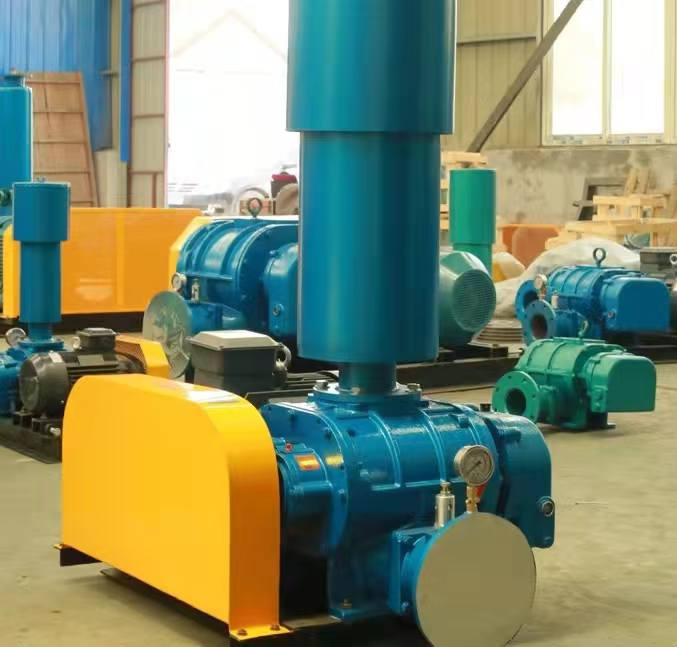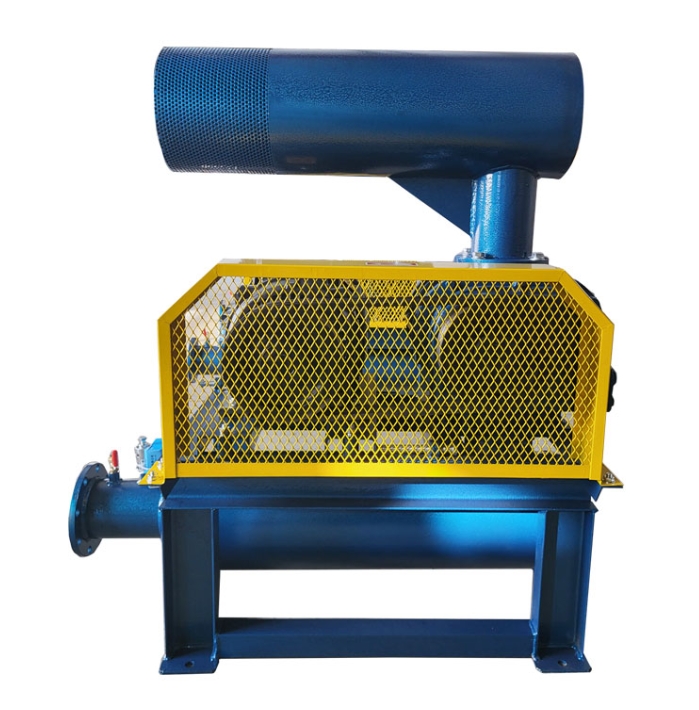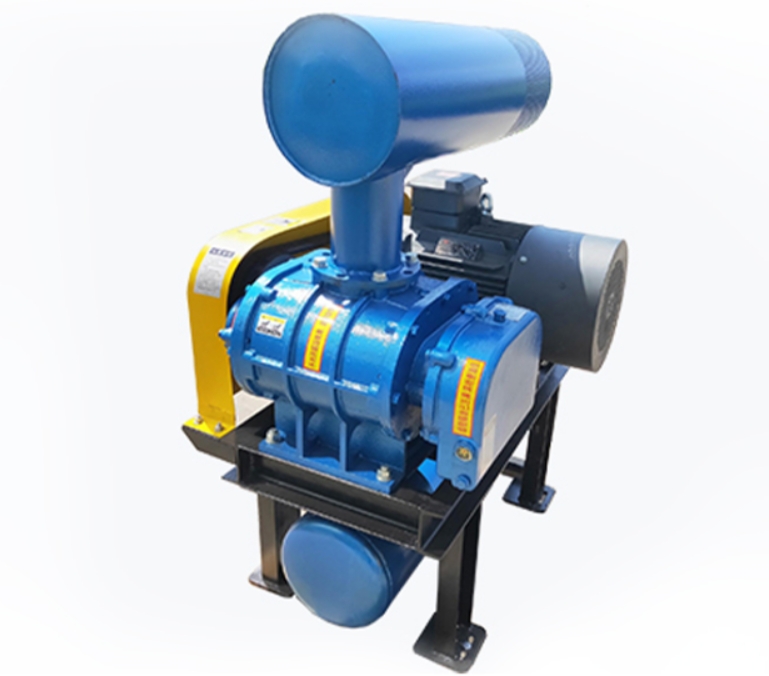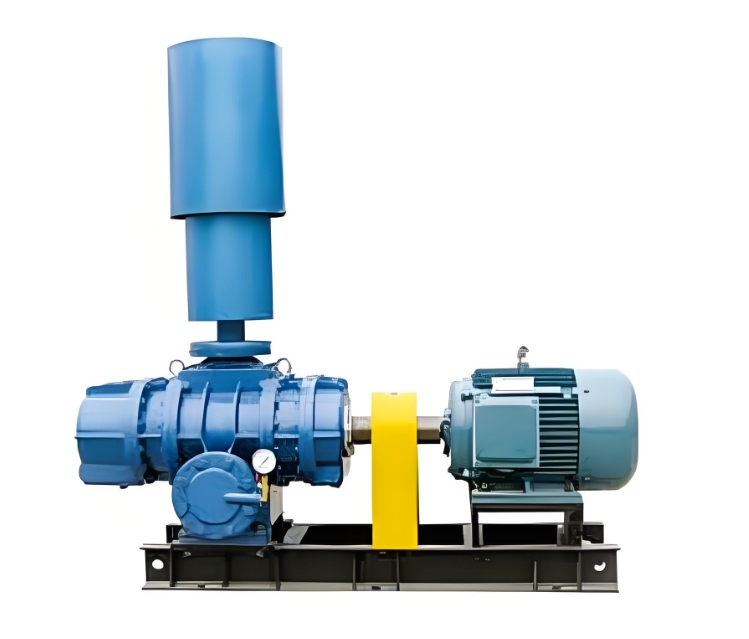**Instructions for using Roots blower (operation guide)**
Roots blower is a type of positive displacement blower, and correct use can ensure its stable operation and extend its service life. The following are detailed operating steps, precautions, and maintenance points.
---

**1、 Inspection before starting Roots blower**
Before starting the Roots blower, the following checks must be carried out to ensure the operation of the equipment:
**1. Mechanical inspection**
|* * Inspection Items * * | * * Standard Requirements * *|
|----------------|------------|
|* * Flexibility of rotor rotation * * | Manual turning should have no jamming|
|Belt/Coupling * * | Moderate tightness, no cracks|
|The anchor bolts are tightened without any looseness, and the shock-absorbing pads are intact|
|Lubricating oil/grease * * | The oil level is within the marked line and there is no deterioration|
**2. Pipeline and instrument inspection**
|* * Inspection Items * * | * * Standard Requirements * *|
|----------------|------------|
|* * Air intake filter * * | Clean and unobstructed|
|* * Export valve * * | Before starting, it should be fully opened * * (to avoid pressure build-up)|
|* * Pressure gauge/vacuum gauge * * | Appropriate range, pointer reset to zero|
|* * Valve * * | Set pressure ≤ 1.1 times rated pressure|
**3. Electrical inspection**
|* * Inspection Items * * | * * Standard Requirements * *|
|----------------|------------|
|* * Motor insulation * * | ≥ 0.5M Ω (500V megohmmeter)|
|* * Voltage/Current * * | Complies with nameplate requirements (± 5)|
|* * Direction * * | Consistent with the fan identification (trial run confirmation)|
---
**2、 Startup steps for Roots blower**
1. * * Open the outlet valve * * (avoid starting with load).
2. * * jog test drive * * (stop the machine after 3-5 seconds and check for any abnormal noise).
3. * * Formally launched * *:
-Observe whether the current is within the rated range (if it exceeds 10, stop the machine for inspection).
-Check the bearing temperature (≤ 75 ℃ is normal).
4. * * Gradually load * *:
-Slowly adjust the outlet valve to the desired operating condition (to avoid sudden pressure rise).
>* * Attention * *:
>- * * It is strictly prohibited to close the outlet valve and start * * (which may cause overpressure and damage to the fan).
>When starting with frequency conversion, it is recommended to gradually increase the frequency from 20Hz to the target value.
---
**3、 Monitoring during operation**
|* * Monitoring Parameters * * | * * Normal Range * * | * * Exception Handling * *|
|--------------|------------|------------|
|* * Bearing temperature * * | ≤ 75 ℃ |>85 ℃ Shutdown inspection for lubrication/cooling|
|* * Motor current * * | ≤ rated current | If it exceeds 10, check for load or voltage issues|
|* * Export pressure * * | ≤ nameplate calibration | Check if the pipeline is blocked when overpressure occurs|
|Vibration value * * | ≤ 4.5mm/s | Abnormal vibration requires checking rotor balance|
---
**4、 Shutdown operation**
1. Gradually reduce the load (first close the outlet valve).
2. Cut off the power and record the running time.
3. * * Emergency stop * * (when abnormal noise, high temperature, or smoke is detected):
-Immediately cut off power and close the inlet and outlet valves.
-After troubleshooting, restart.
---
**5、 Daily maintenance and upkeep**
**1. Daily check**
-Record pressure, current, and temperature.
-Check if the belt is slipping (with moderate tension).
**2. Monthly maintenance**
-Clean/replace the intake filter (when the pressure difference is greater than 5kPa).
-Check whether the lubricating oil is emulsified or has too many impurities.
**3. Annual major overhaul**
-Replace the bearing/gear oil (recommended ISO VG68 or lithium grease).
-Check the rotor clearance (if the wear is greater than 0.5mm, it needs to be adjusted).
-* * Calibration valve/pressure gauge * *.
---
**6、 Common problems and solutions**
|* * Fault phenomenon * * | * * Possible causes * * | * * Solution * *|
|------------|------------|------------|
|* * Fan abnormal noise * * | Bearing damage, rotor collision | Stop and check synchronous gear meshing|
|Insufficient air volume | Filter blockage, belt slippage | Clean the filter screen and adjust the belt|
|* * High temperature * * | Poor cooling, overpressure operation | Check cooling water/pressure relief valve|
|Oil leakage * * | Oil seal aging | Replace mechanical seal|
---
**7、 Precautions**
1. It is strictly prohibited to start under pressure (the valve must be opened first).
2. * * Prohibit reverse operation * * (which may cause gear damage).
3. * * Dust environment * * requires regular cleaning of impeller dust accumulation (caution is even more necessary in explosion-proof situations).
4. During maintenance, the power must be cut off and a warning sign must be hung.
---
**Summary**
-* * Correct start stop * *: Open the valve first and then start, gradually loading.
-Strict monitoring: Temperature, pressure, and current are key parameters.
-* * Regular maintenance * *: Lubrication, filtration, and gap inspection are essential.
By following the above method, it is possible to ensure the long-term stable operation of the Paultz fan. If you need a maintenance manual for a specific model, you can provide further guidance on fan parameters!





